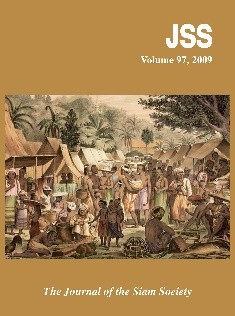Place and space in early Burma: a new look at 'Pyu culture'
Main Article Content
Abstract
Ancient Burma (Myanmar) is commonly split into Upper Burma 'Pyu' and Lower Burma Mon cultures, an ethnic classification of walled site cultures in the Irrawaddy (Ayeyarwaddy) basin that began with fourth to ninth century C.E. scripts. The early Buddhist archaeology, however, points to multiple groups and spreads far beyond the Irrawaddy drainage system. The Mon typology has profitably been unravelled in Aung-Thwin 's controversial study (2005), but, while his advocacy of the Pyu primacy has been questioned, rudimentary definitions of the first millennium C.E. 'Pyu culture' have remained largely unchallenged. The blinkered results of text primacy in defining ethnicity and cultural identity are addressed here, with data from recent discoveries used to identify a relational engagement between the brick walls and terracotta urns typical of early Buddhist cultures in Upper Burma. This localised integration of spatial and spiritual factors is further strengthened by a range of artefacts and indigenous texts.


